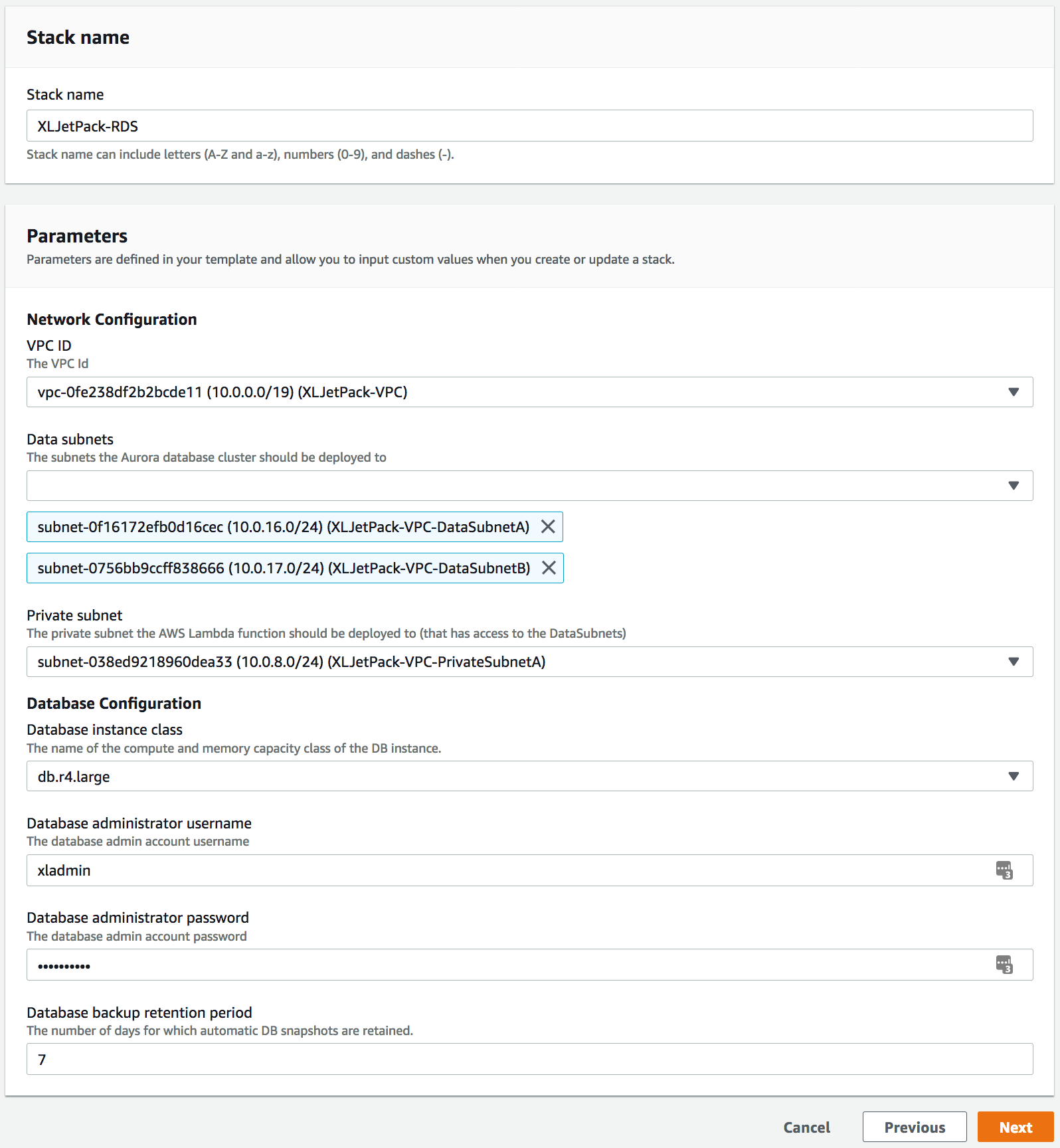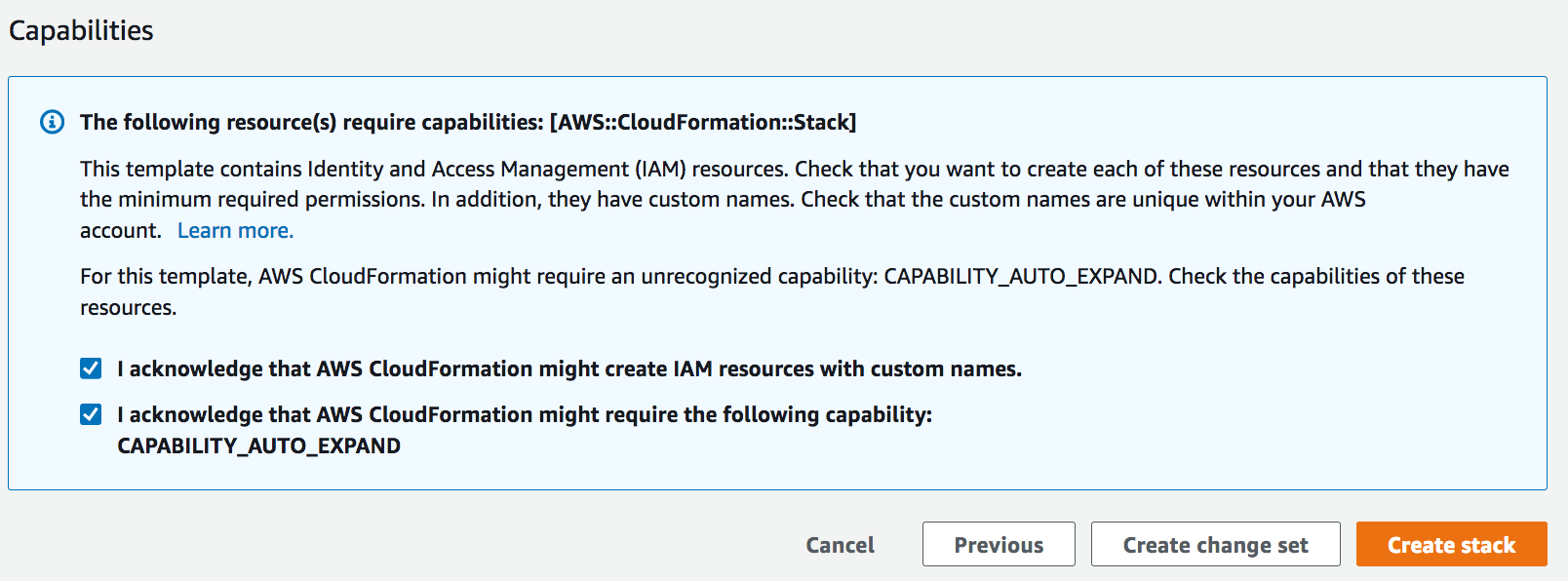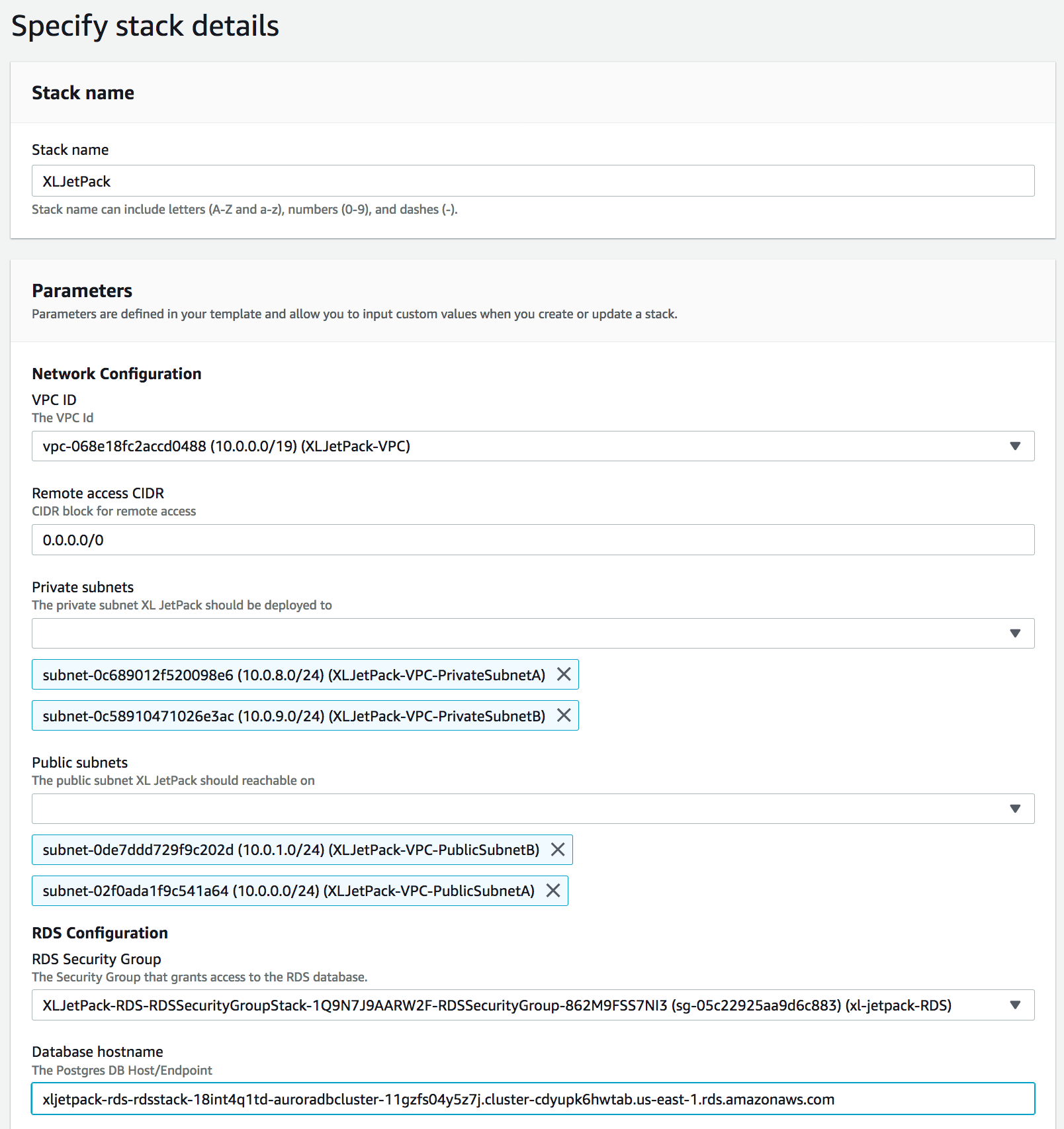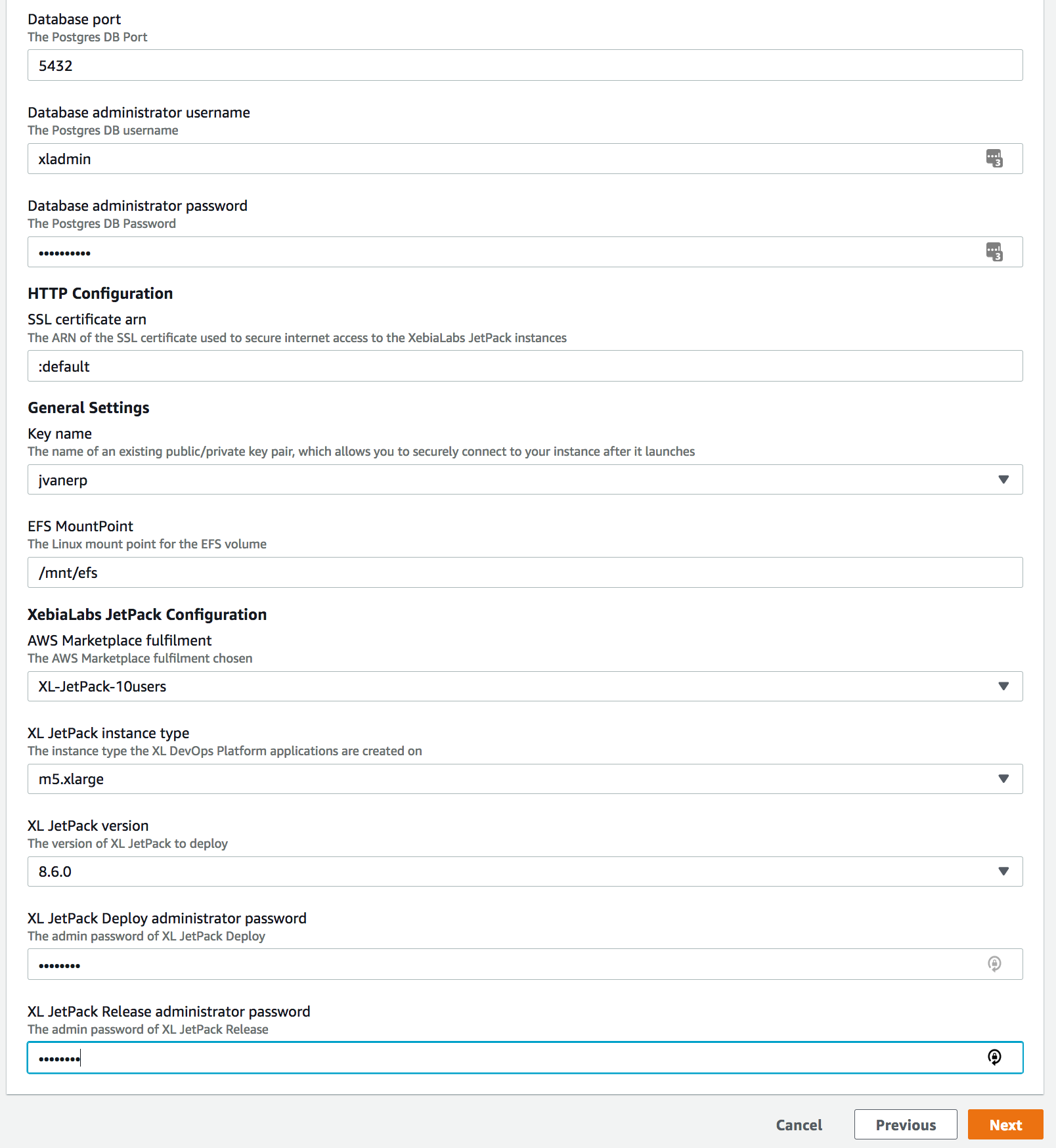XL JetPack Installation on AWS Marketplace
Description
Use Continuous Delivery automation to push applications to Production on AWS in 15 minutes. XL JetPack’s release orchestration, deployment automation, and DevOps blueprints for AWS provide the turbo-boost your apps need for a smooth flight to the cloud.
For more information, visit the XL JetPack page.
Contents
This repository contains a set of AWS CloudFormation YAML templates that allow you to set up XebiaLabs' leading DevOps platform, XL JetPack, on AWS.
Getting XL JetPack running is easy. With just a few short steps, you’ll be pushing your own applications to the cloud using XebiaLabs' release orchestration and deployment automation capabilities.
Step-by-step
Step 1: Subscribe on the AWS Marketplace
XL JetPack is a full-featured, cloud-native Continuous Delivery solution for small teams. Before blasting off with XL JetPack, you’ll need to subscribe to XL JetPack on the AWS Marketplace. Click the button below to get started:
Step2: Configure a VPC and EC2 Key Pair
To run the AWS CloudFormation templates in this repository, you must set up an AWS VPC and an EC2 Key Pair. If these are already created, you can go directly to the next step.
If you want to setup a fresh VPC with, click the below launch button:
Step 3: Configure Amazon Aurora RDS in your VPC
You must set up an Amazon Aurora PostgreSQL database in the VPC that is accessible by XL JetPack to store its data. Furthermore, the Amazon Aurora instance must be configured with a number of databases.
There are two options to set up an Aurora database.
Step 3a: Existing Amazon Aurora PostgreSQL instance
If you already have an Amazon Aurora PostgreSQL database instance running in your VPC, click the button below to run a CloudFormation template that will provision the necessary databases in your Aurora instance.
Step 3b: Empty VPC
If you have an empty VPC, click the button below to run a CloudFormation template that will set up Amazon Aurora PostgreSQL and provision the necessary databases.
If you’ve used the CloudFormation stack from step 1, use the DataSubnetA and DataSubnetB provisione
d by the template for the DataSubnetIDs. Also use PrivateSubnet1A for the PrivateSubnetID.
|
Note
|
Ensure that the subnet specified in the PrivateSubnetID parameter has a NAT Gateway attached and has outgoing internet access. The template will deploy a custom Lambda to the subnet which requires internet access.
|
An example configuration of the CloudFormation parameters looks like this:
In the last step of the CloudFormation wizard, ensure that you check both of the boxes as seen on the following image:
Step 4: Launch the XL JetPack stack
After you’ve set up an AWS VPC, an EC2 Key Pair, and Amazon Aurora PostgreSQL, you can blast off with XL JetPack.
To start XL JetPack, please click the below launch button to start the CloudFormation template that will provision the XL JetPack containers in your AWS account.
An example of the CloudFormation parameters looks like this:
In the last step of the CloudFormation wizard, ensure that you check both of the boxes as seen on the following image:
Once the stack has been created fully, you can visit the Output page of the XL-JetPack CloudFormation stack and get the URLs to the XL JetPack products there.







